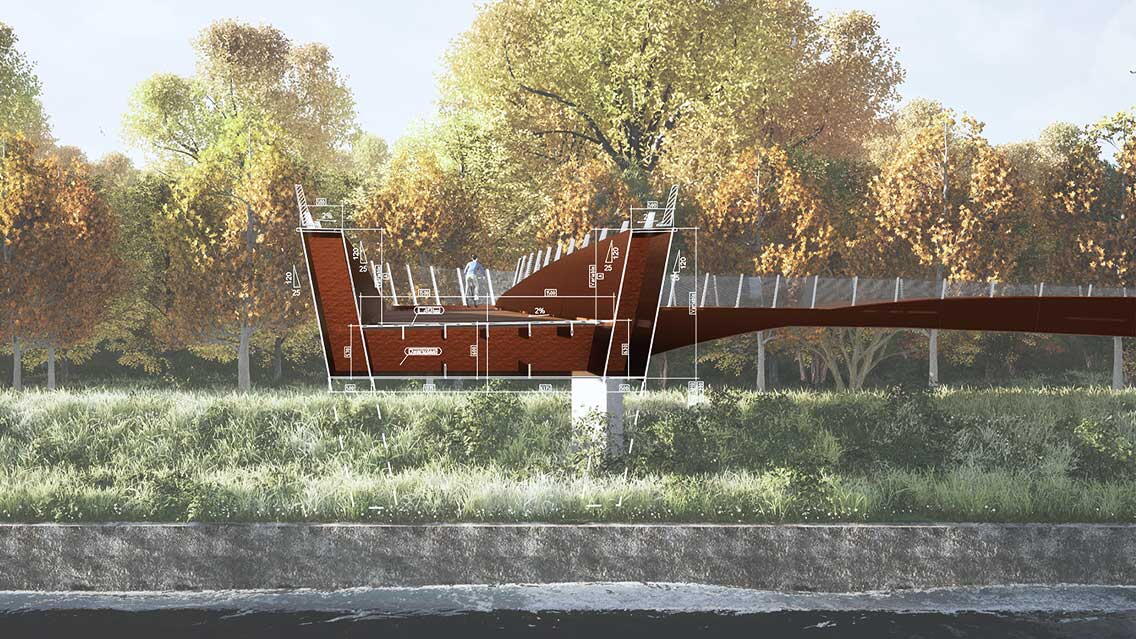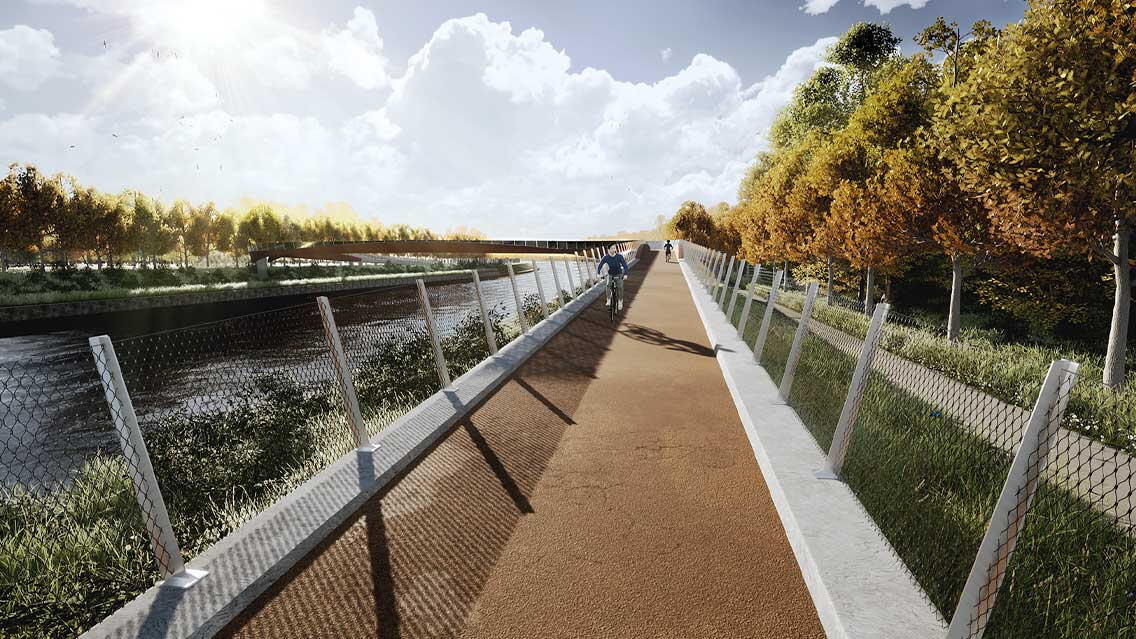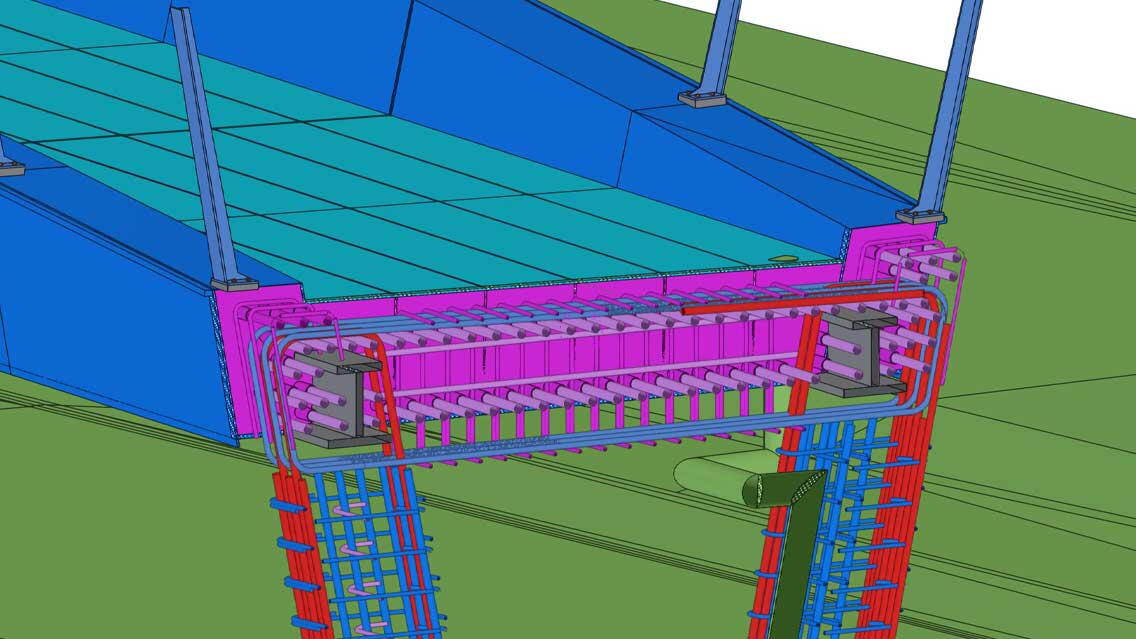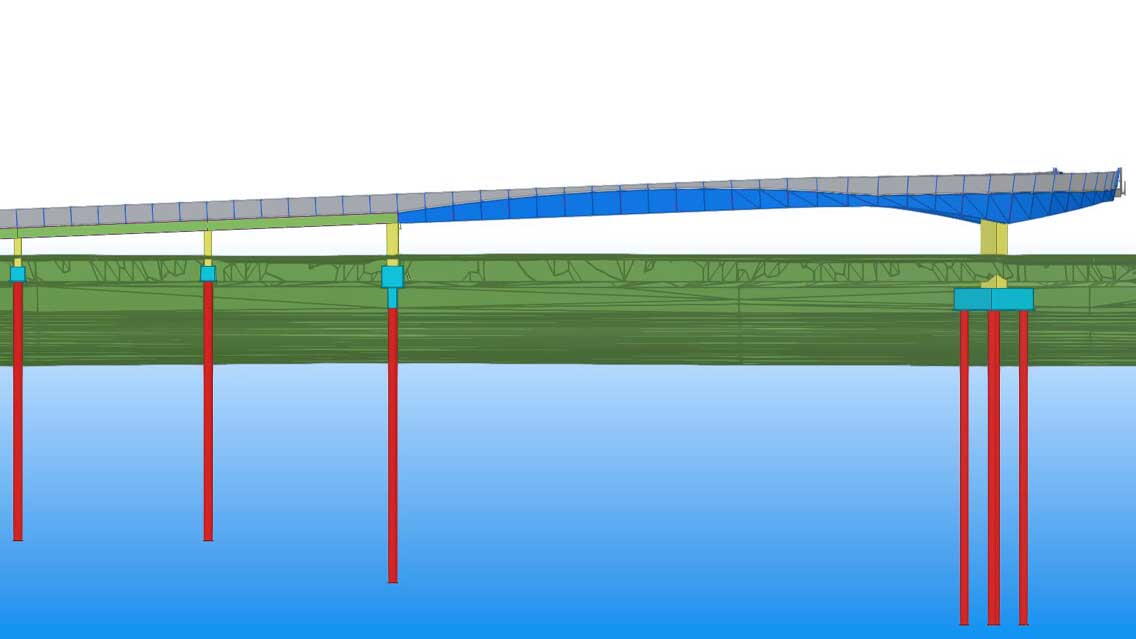Wielsbeke Waregem, a new cyclist and pedestrian bridge is part of the Seine-Scheldt Project. The aim of the project is to build a large gabarit barge connection between the Seine basin and the Scheldt basin. The purpose of the bridge is mainly for tourists to cross the Leie river.
Description of the design starting point
The main starting point for the bicycle and pedestrian bridge is its design. The bridge strives for a sober, harmonious appearance that does not impose itself on this location but just becomes one with the existing rows of trees and the open characteristic of the Leie landscape.
The bridge must, as it were, disappear into the landscape without obstructing the view by protruding and visually dominant supporting elements. The relationship between the two banks should be strengthened by the curved and slender bridge structure, which visually radiates a calm and natural image.
Appearance
Various conditions were considered for the design, the preliminary study of the location, and the optimal route of the bridge. One of these conditions is the seamless transition needed between the existing environment and the specific height levels to which the new bridge must connect. The more we can limit the height difference to be bridged, the more limited the approach slopes of the bridge, which significantly improves the comfort for cyclists and pedestrians. After the study, it was concluded that an S-shaped route is best suited to this.
Materials
The bicycle and pedestrian bridge is made of steel. This material is robust and durable but must be protected against corrosion. To reference the classic steel construction and to give the bridge a timeless appearance, the bridge has been given a hue of red lead color. The bridge deck is provided with a thin layer of non-slip polyurethane resin. The ramps are made of concrete.
(Stability) structure
Because the bridge may not form a dominant image in the Leie landscape, the supporting structure is integrated into the bridge deck. Transparency with the bank is guaranteed, and that is precisely why no pillars are placed right next to the quay walls. This also provides a technical advantage, namely that the potential conflicts between the bridge foundations and the structure of the quay walls can be avoided. The entire construction is made up of a closed support structure, among other things, to avoid possible contamination by birds.
Collaboration between departments
The entire bicycle and pedestrian bridge has been designed and calculated by various engineers and BIM designers. The bridge is parametrically designed using the software programs Rhino 6 and Grasshopper. This model is linked to the SOFiSTiK calculation model and also to Tekla and Civil 3D.
The existing environment and the 3D alignment has been drawn in Civil 3D. This data was used in Rhino 6 and Grasshopper to build surrounding geometry. This geometry and data was then used in the calculation model in SOFiSTiK, but also in Tekla to generate the steel bridge, the complete reinforcement, pile foundation, and formwork. Working with one central model means adjustments can be made to the design very quickly.
Reusable models and data with a central source of information & communication are the essential supporting elements of this project. By working out this project completely in 3D and using the appropriate data, it is very easy to request quantities of material from the tendering phase. It also allows us to use these models as a source for our visualizations and are the basis for our complete BIM model. Working according to the BIM method was central throughout the design.




